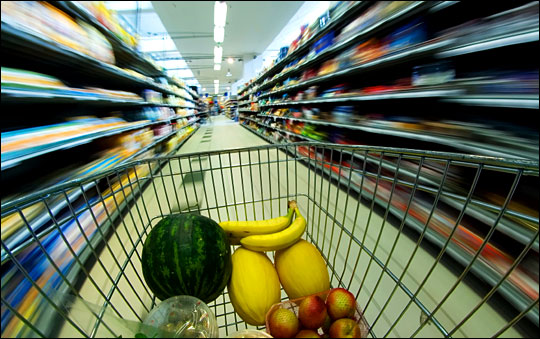farmers markets
-
Toward a less efficient and more robust food system
Produce at a farmer’s market in North Carolina Courtesy RICHIR on Flickr Editor’s Note: This is a version of an address delivered before the High Country Local Food Summit on March 26, in Boone, N.C., organized by Appalachian State University’s Sustainable Development Department. The High Country is a three-county region in the mountains of western […]
-
Springtime is peak time for naturally raised eggs — and bread puddings and meringues
Before moving on to the more glamorous spring harvests of asparagus, sweet peas, and strawberries, let us first praise the pastured farm egg. That’s right: Eggs, too, have a season. Spring has long represented the beginning of a new cycle, and eggs are the epitome of rebirth. Easter egg huntshave their origins in ancient Pagan […]
-
Farmers markets need rules if we want them to help the food system
Daniel Duane in Mother Jones warns you about farmers markets becoming “farmers markets”: In 1994, there were 1,755 farmers markets in the United States; by 2008, there were 4,685. In the big scheme of things, this is terrific news; it means Americans are learning to feed themselves properly. But not all parts of the country […]
-
A hint of the future appears at a Miami-area produce market
 No, this isn't another cap-and-trade post. I'm talking about the yummy kind of markets.
No, this isn't another cap-and-trade post. I'm talking about the yummy kind of markets.As we grapple with ways to reform food production in this country, one problem that crops up is the loss over time of the old farm-to-market networks that fed cities before air freight and transcontinental trucking took over. So even if we wanted to (or, more ominously, were forced to) re-regionalize our food distribution system, the infrastructure no longer exists.
This desire, by the way, is not motivated simply by a need to reduce food miles -- a misleading measure for sure. I and others have talked at length about the misplaced focus on food miles as a way to guide food distribution. Rail, for example, is an especially good way to move food long distances -- especially compared to the option of driving huge fleets of diesel trucks even relatively short distances (which is why rail freight stimulus is such a great idea. Right, Ryan?).
But as we explore ways to reform industrial agriculture and its reliance on fossil fuels in food production, more, smaller farms inevitably come up as an alternative -- and for that sort of system to work, they would need to be proximate to population centers. Speaking of the food miles argument, it's likely that, using our existing infrastructure, exclusively procuring produce from farms within, say, 75 miles of urban centers would cause the transportation component of agricultural carbon emissions to go way up. So, there's a lot to do before anything like this could happen.
And thus we come to the point -- a means to counteract my recent gloom-and-doom posts. Ready?
-
How to maintain a green, healthy diet on a budget
Dear Lou,
With the economic crunch, how is it going to be possible to afford healthy foods for my family, especially organics? It's not like I can go foraging in the medians of the major roadways.
Karl from Southern California
-
What's the point of the industrial food system if it no longer provides affordable food?
Vermont's expansion of the food stamp program is an important story, one that demonstrates an increasing shift in our society's relationship to its food. Vermont's policy change on food stamps is likely to be mirrored by other states, and this represents both a fundamental shift in the reality of American need and also, I think, the final stake in the heart of the industrial food system.
From the Times Argus:
-
The surprising benefits of seasonal eating
In Checkout Line, Lou Bendrick cooks up answers to reader questions about how to green their food choices and other diet-related quandaries. Lettuce know what food worries keep you up at night. Your food or mine? Lou, I am curious about any benefits of eating seasonally — the foods or products that are traditionally […]
-
How to make a meal from your market basket
Turning market treats into good eats. On a recent trip to the farmers market, I found a mountain of leafy greens of all different hues and textures. I couldn’t resist buying four varieties: rainbow chard, red Russian kale, an Asian green similar to spinach, and escarole. Cooler weather also means the arrival of […]
-
The limits of consumption-based food movements
In “Dispatches From the Fields,” Ariane Lotti and Stephanie Ogburn, who are working on small farms in Iowa and Colorado this season, share their thoughts on producing real food in the midst of America’s agro-industrial landscape. This Olathe Sweet Corn is regionally renowned, entirely local, and grown entirely conventionally and industrially, meaning farmers use large […]




